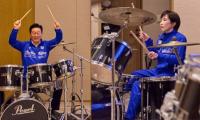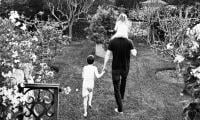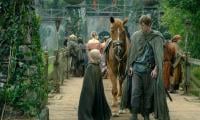Historical site & artefacts discovered in Ghazi Tehsil
HARIPUR: The residents of a village of the Ghazi Tehsil of the Haripur district of the Hazara division have accidentally discovered a historical site and some artefacts, including Buddha’s sculpture, during excavation of a mass of earth and soil, police and Archeology Department sources said here on Friday.
The site supervisor of Archeology Department Khanpur Museum, Raja Adnan, said that excavation of an earth and sand mound was underway at the Khalo village when the people found a wall of cultural value, a palm-size Buddha’s head and a small broken piece of some other sculpture.
The local people informed the police which called the officials of the Archeology Department of Nikra Museum Khanpur.
According to Raja Adnan, the sculptures were shifted to the Khanpur Museum and the site was sealed, restricting external interference.
When contacted Nawazuddin, Sub-Regional Officer, Archaeology Department, Hazara, confirmed that the sculpture found from the Khalo village was of Buddha and another piece which was part of some other sculpture and a wall was from 2nd century AD.
He said the site was surveyed by the officials of the Archeology Department and recommended it for further excavation which was likely to begin within the next couple of days.
Nawazud Din said the size of the Bhudda’s sculpture was 4 inches in length and 2.5 inches in width.
He said the site was expected to be one of the biggest in the Ghazi area measuring about a kanal.
When contacted for opinion, Prof Dr Shakir Ullah Khan, Chairman, Archaeology Department, Hazara University, said the wall of the site was built in dapper masonry of Kushan era of Buddhist architecture.
He said that the type of masonry accidentally discovered suggested that it was founded during the entire Kushan occupation of the area from 3rd century BC to the 5th century AD.
About the Buddhist palm size sculpture, Prof Dr Shakir Ullah Khan said it was made of grey schist stone of typical Gandhara style of Buddhist art while the piece of some other sculpture was a block of Kanjure stone which was normally in use during Buddhist architecture.
He hoped the site was of great importance and needed to be excavated for further discoveries and proper preservation.
-
 Enjoy Lee, Takaichi’s Viral Jamming Session, In Case You Missed It
Enjoy Lee, Takaichi’s Viral Jamming Session, In Case You Missed It -
 MrBeast Admits He's Unsure About Having Kids - Here's Why
MrBeast Admits He's Unsure About Having Kids - Here's Why -
 Prince Harry Carries Heartbreaking Hope For Archie, Lilibet Who Are Not Sharing In Their Royal Heritage
Prince Harry Carries Heartbreaking Hope For Archie, Lilibet Who Are Not Sharing In Their Royal Heritage -
 Tom Brady Breaks Silence On 'personal Life' After Alix Earle Rumors
Tom Brady Breaks Silence On 'personal Life' After Alix Earle Rumors -
 Guy Fieri Drops Health Update After Accident That Left Him In A Wheelchair
Guy Fieri Drops Health Update After Accident That Left Him In A Wheelchair -
 Experts Weigh In: Is Prince Harry Operating A PR Stunt Or The Invictus Games’
Experts Weigh In: Is Prince Harry Operating A PR Stunt Or The Invictus Games’ -
 Inside Kate Middleton’s Biography With Secrets From St Andrews To Harry & Meghan’s Royal Exit
Inside Kate Middleton’s Biography With Secrets From St Andrews To Harry & Meghan’s Royal Exit -
 Paul Mescal Reveals Shocking Move He Made In 'Hamnet'
Paul Mescal Reveals Shocking Move He Made In 'Hamnet' -
 'Kanye West Is Human Too'
'Kanye West Is Human Too' -
 Prince William Hands Kate Middleton Something Highly Sensitive To Manage With Coronation
Prince William Hands Kate Middleton Something Highly Sensitive To Manage With Coronation -
 Critics Get Honest About 'A Knight Of The Seven Kingdoms'
Critics Get Honest About 'A Knight Of The Seven Kingdoms' -
 Why Harry Unlikely To Meet William, Kate During UK Return?
Why Harry Unlikely To Meet William, Kate During UK Return? -
 X To Change AI Chatbot 'Grok' After Outrage Over Explicit Deepfake Images
X To Change AI Chatbot 'Grok' After Outrage Over Explicit Deepfake Images -
 Princess Eugenie Set To Hit New Milestone As Andrew's Eviction Looms
Princess Eugenie Set To Hit New Milestone As Andrew's Eviction Looms -
 Emilia Clarke Gets Honest About Featuring In Shows Like 'Game Of Thrones'
Emilia Clarke Gets Honest About Featuring In Shows Like 'Game Of Thrones' -
 Amazon Employees’ Break-time Fight Ends In Murder In Texas
Amazon Employees’ Break-time Fight Ends In Murder In Texas



